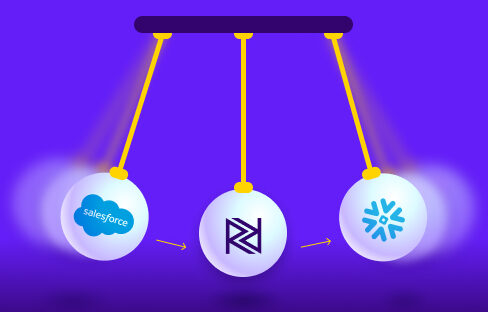According to NOAA’s National Centers for Environmental Information, July 2021 was the world’s hottest month ever recorded. Almost no part of the globe was left untouched. In Portland, Oregon, intense heat melted power cables, causing streetcar services to shut down. Catastrophic flooding in Germany and Belgium swept away entire towns. Russia’s Siberia, typically known for its arctic tundra, exploded into raging wildfires that now rival the biggest fires in the history of mankind.
Climate change is one of the most complex challenges humans have ever faced. That’s why data and data modeling have become so essential in fighting this ever-growing threat. Climate science relies on vast amounts of data, and some of the world’s most complex data models, to calculate and predict the impact of climate change.
The average climate model contains enough computer code to fill 18,000 pages of printed text. Hundreds of scientists often contribute to building a climate model over many years, and the models themselves are run on a supercomputer. These modeled insights, combined with in-field data, can tell us how and why climate changes over time.
Here’s what the climatological data and climate models taught us about the hottest month on record: July 2021.
Hottest Month on Record: July 2021 By The Data
1. Hottest Global Temperature in Recorded History (0.93°C Above Index)

July 2021 experienced the hottest combined land and ocean temperature in recorded history, at 0.93°C. above the 20th-century average of 15.8 °C. The new record edged out the old record (2016 at 0.92°C) by 0.01°C. The 7 highest combined temperatures in recorded history all came within the past 7 years (2015, 2016, 2017, 2018, 2019, 2020, 2021).
2. The Most Global Wildfires in Recorded History (343 megatons of carbon released)

In July 2021, wildfires raged in all corners of the globe, from California, to Siberia, to Africa. This led to the world’s worst July for wildfires in recorded history (records exist back to 2003). Individual nations broke wildfire records at astounding rates. Wildfires burned over 197,000 acres in Italy, four times the national average. North America and Sibera accounted for more than half of all emitted carbon dioxide from wildfires.
3. Historic European Floods Caused Widespread Damage ($11 billion); Will Become x14 More Likely by 2100

Historic floods ravaged parts of Germany, Belgium, and other European countries in July 2021, leaving behind over $11 billion in damages and 340 casualties. Scientists predict that this form of catastrophic flooding will be 14 times more likely in Europe by 2100. Using the climate model known as UK Met Office Unified Model (v10.1), the scientists leveraged supercomputers to model out this prediction.
4. 8.5 Billion Tons of Surface Mass Melted Off Greenland’s Icebergs in a Single 24 Hour Period

On July 27th, 2021, 8.5 billion tons of surface mass melted off Greenland’s icebergs in a single 24 hour period. That’s enough water to fill the entirety of Florida (65,758 mi²) with 2 inches of rain. In the three day period between July 25th – 27th, some 18.4 billion tons of surface mass melted off Greenland’s icebergs. According to recent climate models, Earth is now losing over 1.2 trillion tons of ice per year.
5. 37% of the United States Suffered from Severe to Extreme Drought

According to the Palmer Drought Index, about 37% of the contiguous United States experienced severe or extreme drought in July 2021. That included about 100% of the Western United States, setting an all-time 122-year record. The droughts are not just contributing to the deadly wildfires, but also to impossible farming conditions and food shortages. Wheat production, for instance, is expected to drop 41% in 2021 due to pervasive droughts in the US.
6. Zhengzhou, China Experienced One Year of Rain (24 inches) in Three Days

As “once-in-a-millenium” rainstorms swept through China in mid-July, the residents of Zhengzhou were particularly hard hit. The city of 12 million people was inundated with a year’s worth of rain (24 inches) in a 72 hour period. The rainpour flooded residential and business buildings, tipped over cars, stranded civilians, and caused over 1 million residents to flee to other cities. The rainfall was the most ever documented in China, and among the highest on record globally.
7. 135 °F Temperature in Death Valley is Candidate for Hottest-Ever Recorded Temperature

On July 11th, 2021, Death Valley logged perhaps the hottest temperature on Earth in recorded history. Clocking in at 135 °F, the temperature edged out the standing world record of 134.1 °F from 1913, also recorded in Death Valley. However, due to conflicting recordings by other thermometers, the record is not yet official. Nevertheless, the temperature remains one of the hottest ever logged on Earth, regardless of pending verification.
8. Winter Wonderland: 43 Cities in Brazil See Snow, Many For the First Time in Decades

While the rest of the world burned, parts of Brazil apparently experienced…snow? Frigid air coming north from the Antarctic region caused 43 cities in Brazil to wake up to snow, including many that almost never get snow. For some residents, this was the first time they had ever seen snow in their lives. Although many were stunned by the unexpected beauty of the winter wonderland, the Brazilian agriculture federation FAPES predicted the frost could cause a 30% disruption in sugar cane crops.
The Climate Data Is Bonkers. But There’s Still Time to Act.
July 2021, the hottest month on record, marked all sorts of climate records — and not in a good way. The data is stark, but there’s still time to act. As climate scientists bring more data streams online, and develop more sophisticated climate models, our understanding of our climate challenges will continue to evolve. But we can each play our role in addressing the core issues today. Visit the UN’s Climate Action page for more information on how you can play a role in the solution to climate change.
Minimize the firefighting. Maximize ROI on pipelines.





